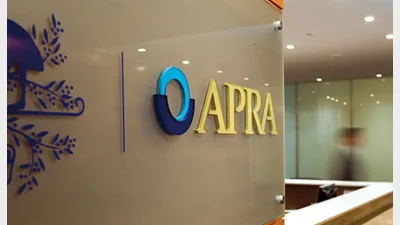Are separately managed accounts a viable option for SMSFs?



Arthur Naoumidis explains how separately managed accounts may provide a solution for SMSF investment strategies.
One of the key problems for many self-managed superannuation funds (SMSFs) is establishing and maintaining an investment strategy.
Many funds do not benefit from professional investment management, with the latest statistics from the Australian Taxation Office (ATO) showing that of the $286 billion held in 378,656 SMSFs, 33 per cent is held in direct equities versus around 19 per cent in managed investments.
Cash also remains popular, with allocations ranging from 20 per cent for larger funds to 50 per cent for smaller funds.
Given professional management could help align investments with SMSF investment strategies, why do SMSFs continue to prefer direct equity investments to managed investments?
Once you have been sold on the merits of a SMSF (in particular its greater control, flexibility, transparency and tax planning potential), holding assets within a traditional opaque, inflexible and non-transparent managed fund is counterintuitive.
You may as well have left the assets in your old super fund and not bothered to create the new structure. The cost of professional management may also be a deterrent.
Instead, SMSFs have been drawn to domestic direct equities, disregarding the professional management and international exposure merits of managed investments.
Separately managed accounts (SMAs) have the potential to turn this trend on its head.
The investment models available within SMAs are managed by professionals, however the underlying technology enables SMSFs to achieve an enhanced investment experience that is more aligned with that of direct equities.
The trustee receives a rich, transparent view of the underlying securities along with the advantages of beneficial ownership, and can increase their level of control by taking advantage of customisations, rebalancing capability and more timely delivery of end of year reporting information.
The customisations offered by some SMA providers really appeal to a SMSF’s requirement for greater control and flexibility over its investments.
This capability allows trustees to exclude particular securities from the SMSF holdings even though the professional investment manager may choose to hold it within their model. Alternatively, the trustee could choose to substitute one security with another.
These customisations may be particularly relevant where the SMSF already holds particular securities within its portfolio and wishes to limit additional exposure. It even enables the trustee to consider the inclusion of ethical investment guidelines within their trust deed.
SMAs can also streamline portfolio rebalancing.
The portfolio’s initial asset allocation is set when the SMA is established and can be easily adjusted using just one screen to reset the portfolio to a new allocation.
Importantly, the SMA technology ensures that this rebalancing process is cost effective as well as administratively efficient.
Rather than incurring the costs associated with completely selling one fund and buying a new fund, the SMA simply sells the particular underlying securities required to result in the new allocation.
Trading costs are further minimised by netting these security transactions against the trades of other investors. As SMAs grow, it is conceivable that these trading costs will approach zero.
The timeliness of reporting for SMSFs can also be enhanced through the use of SMAs. Firstly, the online reporting capability provides the trustee and administrator with 24/7 access to run investment reports at any time they choose.
Secondly, the corporate actions and other transactions that take place within the portfolio are automatically updated.
This significantly streamlines the administration of equity portfolios and enables the administrator to ensure the portfolio is up-to-date throughout the year rather than needing to wait until the end of the financial year.
Thirdly, the administrator is not reliant on the often inaccurate and slow distribution of end of year tax break ups by fund managers, as all the underlying securities tax information for the previous year is available on the SMA system on the first day of the new financial year.
Lastly, some SMAs provide direct data downloads into the SMSF compliance system, minimising re-keying of data and improving accuracy. This also improves the speed at which the end of year reporting for the SMSF can be completed.
Potential future enhancements, such as risk-based models and automated life-styling, will only serve to strengthen this alignment between SMAs and SMSFs.
Risk-based models have the potential to provide all the transparency, flexibility and control desired by SMSFs whilst also ensuring that a professional investment manager adjusts the underlying asset allocations to maintain a particular risk profile.
Life-styling models could also automatically adjust the asset allocation from growth to income assets as the beneficiaries approach retirement.
With such a strong psychological and administrative fit, we are likely to see significant adoption of SMAs within the SMSF market.
SMAs are able to deliver the control, flexibility, transparency and timeliness so desired by SMSFs and offer more confidence to trustees that their fund is aligned with their defined investment strategy.
It is relatively early days in SMA development and future enhancements will only serve to strengthen the appeal of SMAs to SMSFs.
Arthur Naoumidis is the group chief executive at Praemium.
Recommended for you
MLC Asset Management has posted strong superannuation returns for the 2025 financial year, crediting steady asset allocation and broad diversification for navigating a noisy investment landscape.
Banks, insurers, and superannuation funds will be required to meet higher standards of operational risk management from today, with Prudential Standard CPS 230 now effective.
The pace of economic growth in Australia is expected to “grind higher over coming quarters” off the back of lower inflation, falling interest rates, and a robust labour market, Deloitte has said.
The superannuation sector has welcomed confirmation that a controversial US tax provision will be removed.












